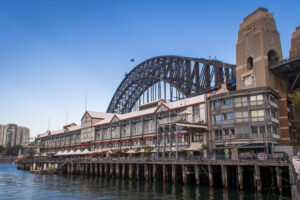Rajitha Menon, Deccan Herald, conducted the following interview
Being a museum specialist is not a career that immediately springs to mind while charting out one’s future path. But choosing to embark on the path less taken, Sydney-based Vinod Daniel has made a name for himself as an internationally renowned museum specialist.
His work covers a range of specialised areas in over 50 countries and he also provides leadership to several world heritage institutions.
Vinod is also CEO of India Vision Institute, a charitable trust assisting underprivileged communities in India. Rajitha Menon caught up with the man as he multi-tasked his way through roles.
Could you tell us about your journey in the sector till now…
I have worked in the museum sector for the last 25 years and I had roles with both large and small institutions. I am currently chairman of the board for AusHeritage, the national industry network in Australia. I am also in the board of the International Council of Museums, the museum peak body representing over 37,000 museum professionals and 20,000 museums.
What exactly does your work involve?
It depends on the project. Training activities for museum professionals, museum planning issues, risk assessment for collections, strategic planning for projects, education – I have worked on all aspects.
How did you get interested in this field?
I did my chemical engineering in IIT Delhi. Then I went to the USA and did my Masters there. There was a job opening at the J Paul Getty Trust where they wanted someone with a chemical background for doing research on how to better preserve collections. Once I got in, there was no coming back.
Why is that?
It is one of those fields where the impact of what you do is very high. Once we finish our work, there will be hundreds of museums around the world, implementing what you did. Also you feel quite proud that you are helping to preserving something.
What can be done in Bengaluru in the museum sector?
I would imagine a city like Bengaluru should have at least one world class museum. This creative city needs to have a comprehensive approach, a long term strategy to transform the sector.
How can that be done?
Museums should be managed properly and should have their own identity. We need to rejuvenate all current museums and make them attractive for varied audiences. Then human resources – it is a very specialised area. We can look at a couple of universities having graduate-level programmes and mid-career training for people already involved in this sector. Another aspect would be to look at what is missing. For example, Singapore realised it didn’t have enough space to store the collections so they built a huge standalone storage area.
Is it possible here?
If you look at the Prince Of Wales Museum in Mumbai (Chhatrapati Shivaji Maharaj Vastu Sangrahalaya), they have transformed the place over a 20-year period into a world class museum. So it can be done in India. What successful museums all over the world do is they pitch displays to what the audience wants and not what some museum professional thinks. They look at the target audience that comes there, see what interests them and what messages you can take back.
What are some of the most popular exhibits around the world?
Some objects, like a mummy, have an awe factor associated with them. Everyone will want to see a mummy. Like how everyone will want to see the Taj Mahal, irrespective of the story around it. Other objects are popular because of the message they send you. I once saw a body art museum which was hugely popular. Displaying tattoos, the concept showcased style, technique and tradition.
First thing that strikes you as lacking when you go to an Indian museum…
I see lack of trained human resources, at all levels. Once you get trained people, they will start transforming the sector. You need to start appointing directors with at least 5-8 years experience so that they can start making a change. Stop having bureaucrats who just come and go.
Read more at:
https://www.deccanherald.com/content/662230/past-present-perfect.html

